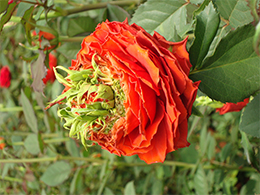
Biostimulants are products derived from natural sources and can be enhanced through biological processes like fermentation. They boost the normal growth capacity of plants without directly addressing plant diseases or pests. Instead, biostimulants are used to improve crop quality, enhance nutrient utilization, and support the plants’ inherent defense mechanisms. Certain groups of biostimulants specifically strengthen crops’ resilience against abiotic stress factors, such as adverse weather conditions, to which crops are increasingly exposed.
Some products marketed as biostimulants primarily contain nutrients, aiming to optimize fertilization, particularly with micronutrients. Therefore, it’s essential to understand the specific purpose of each biostimulant. Biostimulants are a diverse group of substances that promote plant growth by stimulating natural processes.
Unlike traditional fertilizers, which supply nutrients directly, biostimulants enhance the plant’s ability to utilize existing nutrients more efficiently. They include a wide range of ingredients such as humic acids, seaweed extracts, amino acids, beneficial bacteria, and fungi. These substances can be derived from natural sources or synthesized in laboratories.
The primary function of biostimulants is to improve plant health and vigor, leading to better growth, higher yields, and improved resistance to environmental stresses. They achieve this by enhancing root development, boosting nutrient uptake, and increasing the plant’s resilience to stress factors such as drought, extreme temperatures, and pests.
Mechanisms of Action
- Enhanced Nutrient Uptake
One of the most significant benefits of biostimulants is their ability to improve nutrient uptake. By promoting root growth and enhancing the plant’s natural ability to absorb nutrients from the soil, biostimulants ensure that plants get the most out of the fertilizers applied. This is particularly important in floriculture, where vibrant blooms and healthy foliage are essential.
- Stress Tolerance
Plants in floriculture often face a variety of environmental stresses, including extreme temperatures, drought, and pest attacks. Biostimulants help plants build resilience against these stresses by activating natural defense mechanisms. For instance, certain biostimulants can stimulate the production of stress-related proteins and antioxidants, enabling plants to better withstand adverse conditions.
- Root Development
A robust root system is crucial for water and nutrient uptake. Biostimulants promote root growth and development, leading to healthier and more vigorous plants. Enhanced root systems also improve the plant’s ability to anchor itself in the soil, reducing the risk of lodging and other physical damages.
- Improved Plant Metabolism
Biostimulants enhance various metabolic processes in plants, including photosynthesis. By boosting the efficiency of these processes, biostimulants help plants produce more energy, which is then used for growth and development. This leads to better plant vigor, increased flower production, and enhanced overall health.
Benefits of Biostimulants
The use of biostimulants in floriculture offers numerous benefits, making them a valuable addition to any cultivation practice.
- Better Bloom Quality
One of the most noticeable benefits of biostimulants is the improvement in flower quality. Enhanced nutrient uptake and stress tolerance lead to more vibrant, larger, and longer-lasting blooms. For commercial growers, this translates to higher market value and greater customer satisfaction.
- Increased Yield
For commercial floriculturists, yield is a critical factor. Biostimulants can increase the number of flowers produced per plant, enhancing overall productivity. This is particularly beneficial in high-value crops where maximizing output is essential for profitability.
- Sustainable Practices
Biostimulants contribute to more sustainable floriculture practices. By improving nutrient efficiency and reducing the need for chemical fertilizers and pesticides, they support environmentally friendly growing methods. This is increasingly important as consumers become more conscious of the environmental impact of their purchases.
- Cost-Effectiveness
While biostimulants represent an additional investment, the benefits often outweigh the costs. Improved plant health and yield can lead to higher returns for floriculturists. Moreover, the reduced need for chemical inputs can result in significant cost savings over time.
Popular Biostimulants in Floriculture
Various types of biostimulants are commonly used in floriculture, each offering unique benefits.
- Seaweed Extracts
Seaweed extracts are rich in hormones and minerals that promote plant growth and stress resistance. They are particularly effective in improving root development and enhancing the overall vigor of plants.
- Humic Acids
Derived from decomposed organic matter, humic acids improve soil structure and nutrient uptake. They enhance root growth and increase the availability of nutrients in the soil, leading to healthier plants.
- Amino Acids
Amino acids are the building blocks of proteins and play a vital role in plant growth and development. They help plants recover from stress, boost metabolism, and enhance overall growth.
- Beneficial Microbes
Products containing beneficial bacteria and fungi improve soil health and nutrient availability. These microbes form symbiotic relationships with plant roots, enhancing nutrient uptake and protecting against pathogens.
Application of Biostimulants
To maximize the benefits of biostimulants, it’s essential to use them correctly. Here are some practical tips for incorporating biostimulants into your floriculture practices:
- Follow Manufacturer Instructions
Different biostimulants have specific application rates and methods. Always follow the manufacturer’s guidelines for the best results. Over-application can be wasteful and potentially harmful, while under-application may not provide the desired benefits.
- Combine with Fertilizers
Biostimulants are most effective when used alongside traditional fertilizers. They help plants make better use of the nutrients provided, enhancing the overall effectiveness of fertilization programs.
- Regular Applications
For continuous benefits, apply biostimulants regularly throughout the growing season. Consistent use ensures that plants receive ongoing support, leading to sustained growth and health.
- Monitor Plant Response
Keep an eye on how your plants respond to biostimulant applications. Adjust usage based on plant health and growth patterns. If you notice any adverse effects, consult with the product manufacturer or an agricultural extension service for guidance.
By understanding how biostimulants work and applying them correctly, you can unlock the full potential of your plants. Embrace the power of biostimulants and watch your farm flourish like never before, enjoying the vibrant colors, robust health, and stunning beauty that only well-cared-for plants can provide.
